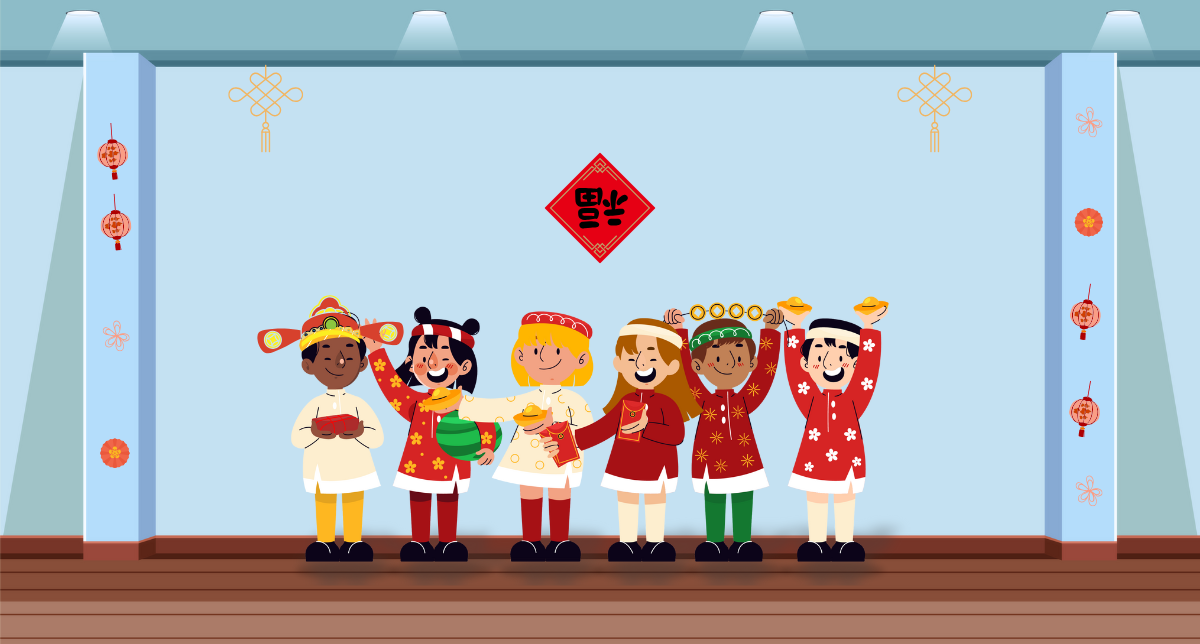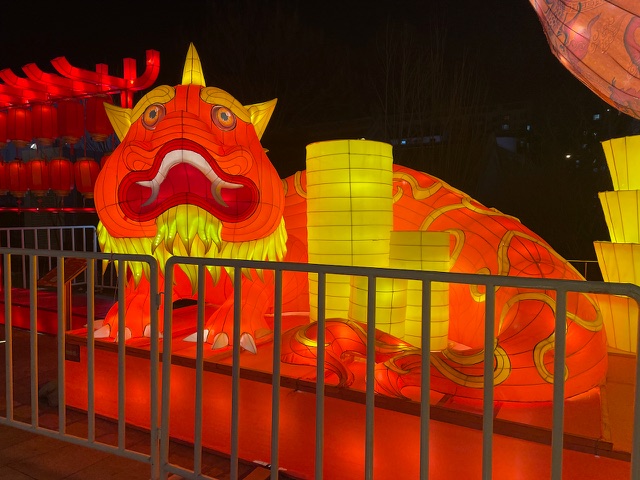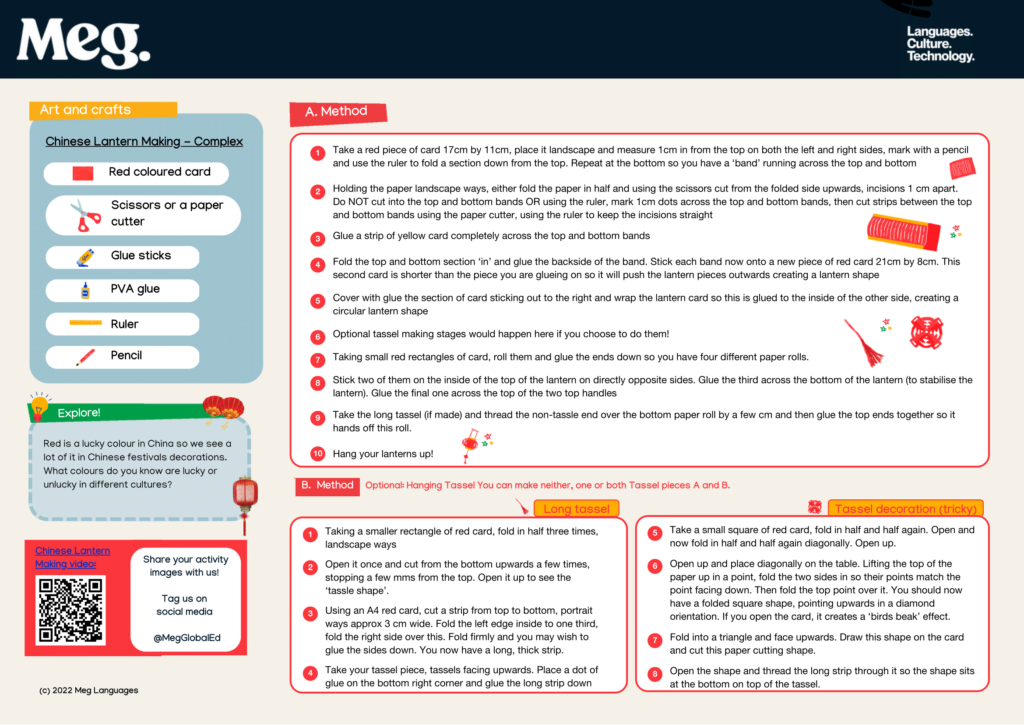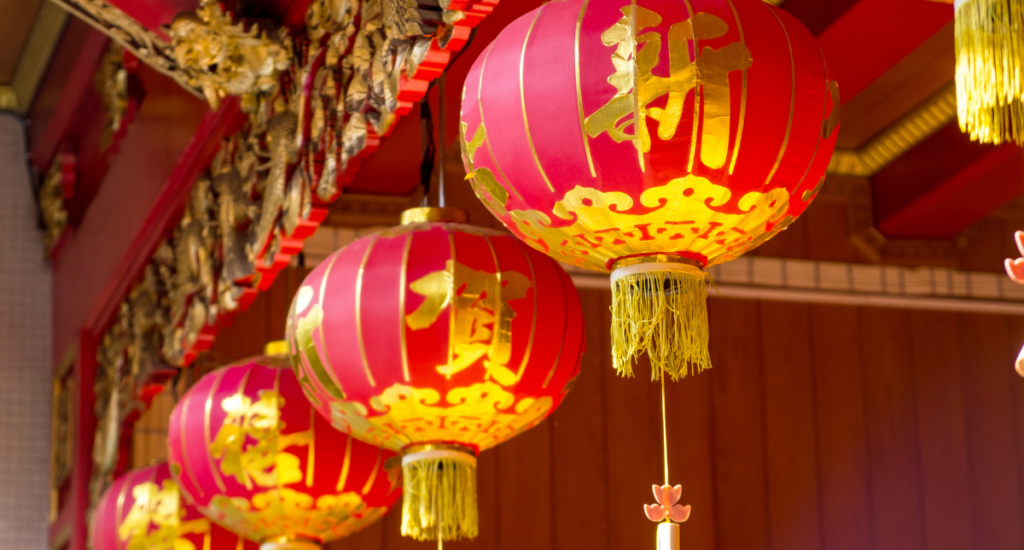Chinese New Year 2025 Student Activities and Teaching Ideas

Lunar New Year offers a wonderful opportunity to bring cultural exploration into your classroom! Observed by millions of people across East and Southeast Asia, Lunar New Year is rich with traditions that celebrate good fortune, renewal, and togetherness. Across different regions and communities, this festival is known under various names: Tết in Vietnam, Seollal in Korea, and Chūn Jié (Spring Festival or Chinese New Year) in China. Each celebration has its own unique customs and stories, but with shared themes of prosperity and new beginnings.
For teachers, Lunar New Year is a fantastic time to create engaging lessons that foster cultural appreciation and student participation. Whether you’re introducing students to this festival for the first time or looking for fresh ideas to celebrate, Lunar New Year activities can spark curiosity and excitement in your classroom.
In this blog, we’ll focus specifically on Chinese New Year, exploring its rich cultural traditions and providing ideas to bring them to life in your classroom!
What is Chinese New Year?
Chinese New Year, also known as Spring Festival (Chūnjié, 春节), is one of the most important holidays in Chinese culture. It follows the lunisolar calendar, a combination of lunar months and the solar year. Families will host reunion dinners, decorate their homes with red and gold for good fortune, and give children red envelopes (hóngbāo, 红包) that symbolize blessings for the year ahead. In 2025, Chinese New Year begins on January 29 and welcomes the Year of the Snake.
The Legend of the Nian Beast
According to Chinese mythology, the origins of Chinese New Year are tied to the Nian, a fearsome beast that would appear at the end of the year to terrorize villages. Villagers discovered that the Nian was afraid of loud noises, bright lights, and the color red. To ward off the Nian, villagers used firecrackers, hung red banners, and lit lanterns—traditions that continue today to symbolize protection and the ushering in of good fortune. Sharing this story with students can make the holiday more engaging and meaningful while connecting them to its cultural roots!

Six Chinese New Year Activities for Students
Bring the spirit of Chinese New Year into your classroom with these engaging and easy-to-use resources! These activities give students a hands-on way to learn about the traditions and significance of this festival. Whether you’re looking for Chinese New Year crafts, games, delicious recipes, or printable materials, these ideas are perfect for celebrating with elementary students. A few of these resources can be adapted for high schoolers, as well!
1. Downloadable Coloring Pages
Let students explore the symbols of Chinese New Year through art! Download and print these coloring book pages that feature iconic images like lanterns and zodiac animals. Younger students can focus on creative expression, while older students can pair the activity with a discussion on the meanings behind each symbol.
How to Use: Create a festive classroom display with completed pages, or encourage students to discuss how different cultures use colors and symbols to represent ideas or beliefs.
2. Celebrate with our Spotify Playlist!
Set the mood for your celebration with a curated playlist of festive Lunar New Year songs. These tracks bring the sounds of the holiday to life and can be a great way to introduce students to traditional festival music.
How to Use: Explore how music reflects cultural values and emotions during celebrations.
3. Explore Chinese New Year Through Food!
Food is central to Chinese New Year celebrations and family reunions. Check out our recipe cards for festive dishes like dumplings that students can make at home. These recipes encourage family participation and cultural immersion outside the classroom!
How to Use: Discuss the cultural symbolism of foods like dumplings, which represent wealth, or tangyuan, which symbolize family togetherness.
4. Chinese New Year Book List
Check out these picture book recommendations that are perfect for your Chinese New Year classroom celebration.
- Happy Chinese New Year! A Festive Counting Story by Jannie Ho
- Bringing in the New Year by Grace Lin
- Chloe’s Lunar New Year by Lily LaMotte and illustrated by Michelle Lee
- The Nian Monster by Andrea Wang and illustrated by Alina Chau
- The Runaway Wok by Ying Chang Compestine and illustrated Sebastia Serra
How to Use: Use the books as a springboard for a writing activity where students reflect on their own holiday traditions. Or, encourage students to consider how storytelling helps preserve cultural practices over time.
5. Try our Chinese New Year 3D Game!
In our 3D game, Culture Quest: Zodiac Chase, students are transported to the Great Wall of China where time has stopped on the eve of Chinese New Year. They will be tasked with 12 exciting missions in order to restart time, save the day, and welcome in the new year!
Our 3D game is part of our language learning platform, Journeys! Curious about trying this experience in your classroom? Contact us any time for more information about how to get started!
6. Explore our Classroom Resource Hub by Grade Level
Head over to Meg Vault to explore even more activities, like arts-and-crafts, for different age groups. Feel free to adapt them to your classroom’s needs!
Tips for Celebrating Chinese New Year in the Classroom
Here are a few suggestions to create an engaging, hands-on learning experience that blends cultural exploration with fun classroom activities!
1. Integrate Language Learning
Chinese New Year is a fantastic time to introduce phrases in Mandarin or other languages. Try “Happy New Year” greetings like Xīnnián kuàilè (新年快乐) or explore the Mandarin pronunciations of the Chinese Zodiac. For beginners, check out this coloring activity where students can decorate (or even practice writing) the character “Fu” which means “lucky.” These small language activities can build students’ curiosity and encourage cultural understanding.
2. Make it Hands-On!
Get creative with crafts that connect students to Chinese New Year traditions. For example, create paper lanterns or dragon puppets to explore the significance of these symbols. Hands-on activities are a great way to help students connect with the holiday!

3. Incorporate Student Participation
Encourage students to take an active role in celebrating by creating short presentations or posters about Chinese New Year traditions. Older students can research and share how the holiday is celebrated in different regions of China or compare it with other Lunar New Year traditions in countries like Vietnam (Tết) or Korea (Seollal).
4. Highlight Cross-Cultural Connections
Chinese New Year isn’t the only holiday that celebrates family, renewal, and light. Explore and discuss similar festivals from other cultures, like Diwali (India) or Eid al-Fitr (Muslim communities). By exploring and reflecting on these connections, students gain a broader understanding of how different cultures celebrate shared values in unique ways. This builds global awareness and empathy while fostering a more inclusive classroom environment.
Celebrating global holidays like Chinese New Year in the classroom is a meaningful way to inspire language learning, foster cultural understanding, and connect students to the world around them. By incorporating crafts, games, and hands-on activities, students develop a greater appreciation for diverse traditions while building skills that extend far beyond the classroom.

Thank you for your dedication to creating inclusive, engaging learning environments for your students and for fostering the next generation of global citizens. Your efforts make a difference every day!
We’d love to see how your students bring Chinese New Year to life in your classroom. Tag us on social media (@megglobaled) and share your celebrations! For more ideas, resources, and updates, sign up for our newsletter and stay connected with our community of educators.
Wishing you and your students a joyful Chinese New Year filled with language discovery and cultural exploration!
Share this post

